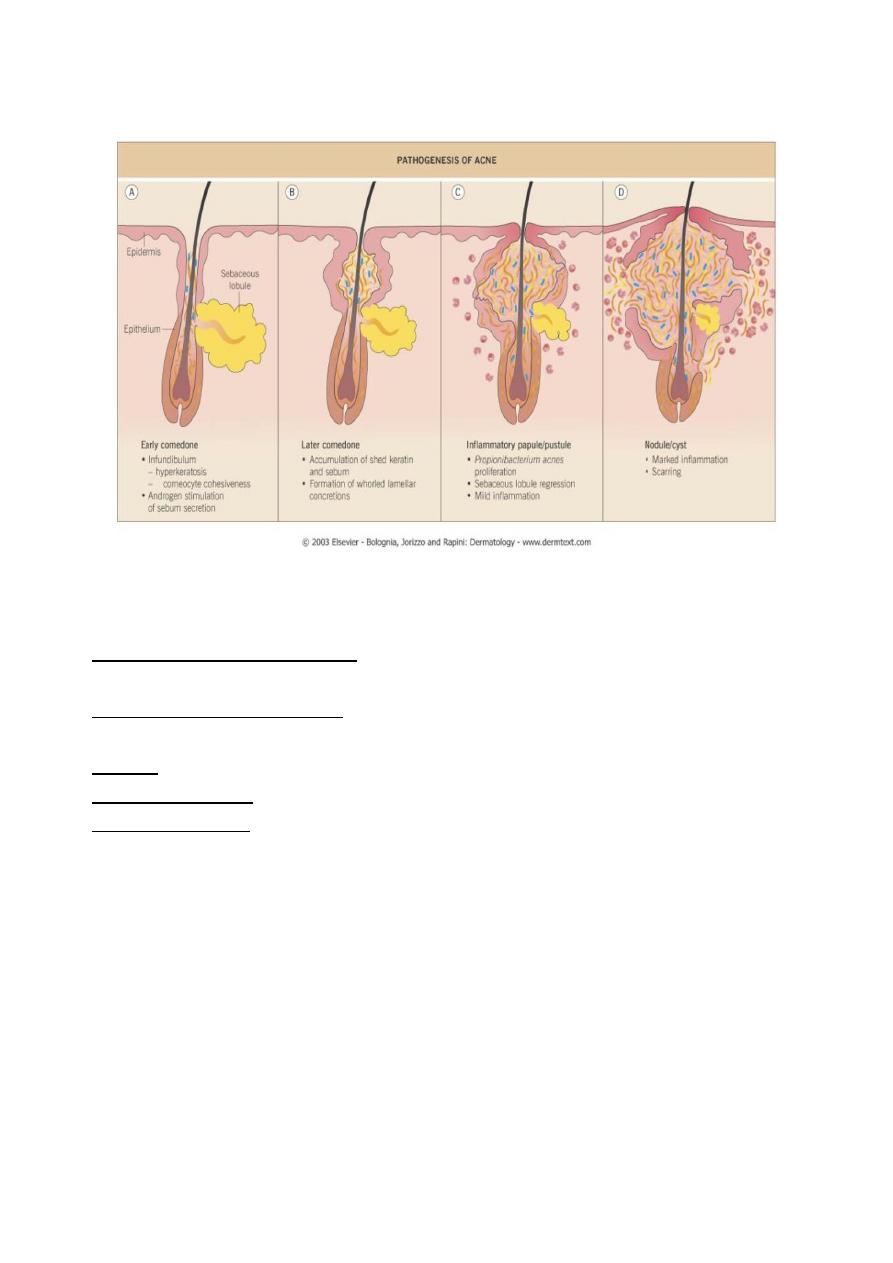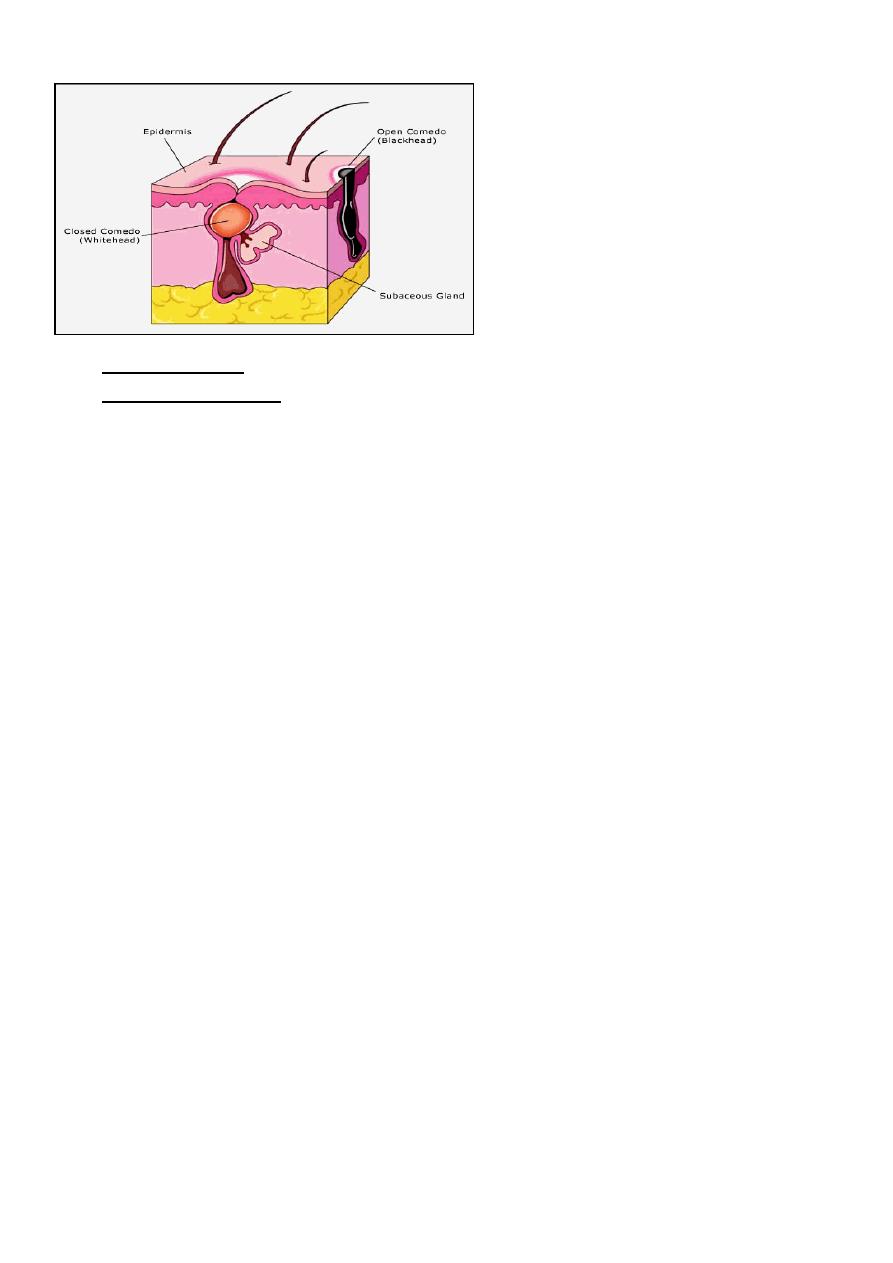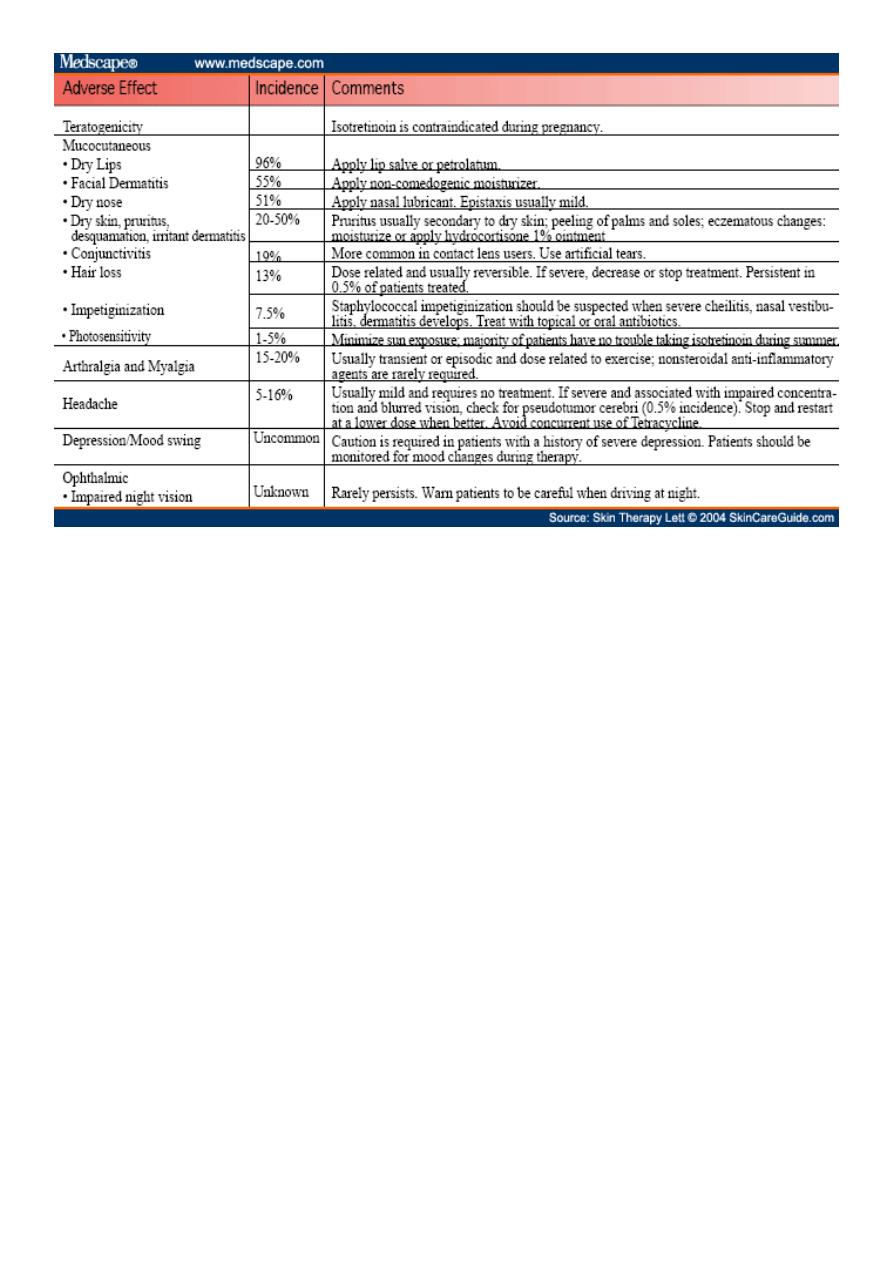
1
Fifth stage
Dermatology
Lec-7
.د
عمر
1/12/2015
Acne Vulgaris
Overview:
Acne vulgaris is the most common cutaneous disorder.
It affects about 99% of teenagers in industrialized nations..
Patients can experience significant psychological morbidity and, rarely, mortality due to
suicide.
Affects all races and ethnicities with equal significance.
Darker skinned patients at increased risk for developing post-inflammatory hyper-
pigmentation and keloids.
Definition
Acne vulgaris, more commonly referred to simply as acne, is a chronic inflammatory
disorder of the pilocebaceous unit.
Pathogenesis
Increased sebum production (androgens)
Abnormal keratosis (androgens)
bacterial proliferation (Propionibacterium acnes)
inflammation
Propionibacterium Acne
Propionibacterium acnes is a gram-positive, non-motil rods relatively slow growing
typically aerotolerant anaerobic.
Pathophysiology
The initial step in the development of acne is the formation of the microcomedon:
Follicular keratinocytes that exhibit increased cohesiveness do not shed normally,
leading to retention and accumulation of sebum.
Androgens stimulate enlargement of sebaceous glands and increased sebum
production, and the abnormal keratinaceo-us material and sebum collect in the
microcomedon.
This leads to a build-up of pressure, and whorled lamellar concretions develop. At this
stage, a non-inflammatory comedon may be seen clinically.
This micro-environment allows the proliferation of bacterium, which is part of the
normal flora of follicles. This gram-positive rod has low virulence but is capable of
metabolising triglycerides and releasing free fatty acids. This metabolism, as well as its
ability to activate complement, produces pro-inflammatory mediators, including
neutrophil chemo-attractants.

2
With increased pressure and recruitment of inflammatory mediators, the
microcomedon may rupture and release immunogenic keratin and sebum, thus
stimulating an even greater inflammatory response
Clinical Manifestations:
Closed comedone (whitehead) - a clogged follicle. Whiteheads usually appear on the
skin as small, round, white bumps.
Open comedone (blackhead) - a plugged follicle that opens and turns dark at the
surface of the skin. Blackheads do not indicate the presence of dirt.
Papules - inflamed lesions that appear as small, pink bumps on the skin.
Pustules (pimples) - inflamed pus filled lesions that are red at the base.
Cysts and nodules - large, inflamed, pus filled lesions deep under the skin that can
cause pain and scarring.
Open comedones (blackhead)
when follicular orifice is opened and distended.
Melanin + packed
keratinocytes + oxidized
lipids dark colour

3
Whitehead and blackheads
Local symptoms : include pain, tenderness.
Systemic symptoms : most often absent
Classification
Comedonal acne: Only comedons
Mild acne: Less than 20 pustules.
Moderate to severe acne: More than 20 pustules
Antibiotics:
Topical (clindamycin and erythromycin) and systemic antibiotics used in the
treatment of acne vulgaris are directed at Propionibacterium acnes.
o Minocycline
o Doxycycline (50 t0 200 mg / day for 3 months)
o Tetracycline
o Lymecycline
Retinoids:
These agents decrease the cohesiveness of abnormal hyperproliferative
keratinocytes.
o Isotretinoin (systemic) 0.5 - 1 mg per kg over 4 to 6 months
o Indications?
o Tretinoin (topical) cream (0.025%, 0.05%, 0.1%)

4
